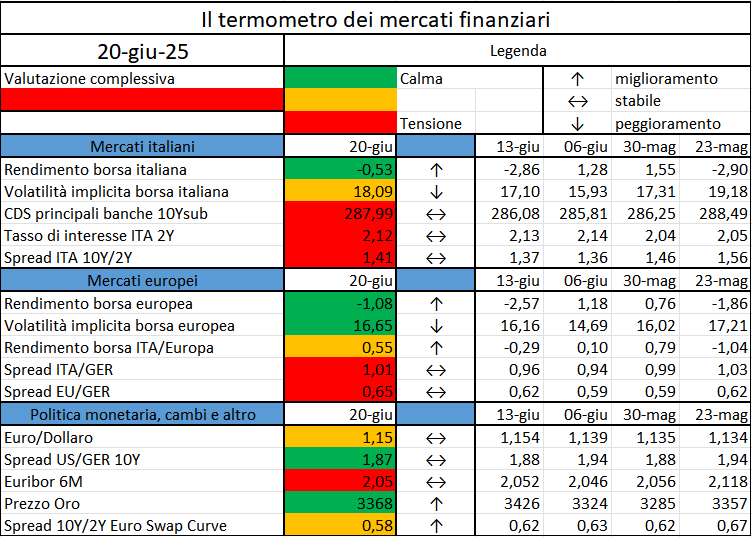
a cura di Deloitte
Per quale motivo il Regolatore ha introdotto la nuova normativa EMIR 3.0, considerando che all’interno del panorama europeo erano già presenti molteplici direttive che regolamentavano l’operatività in derivati?
Questa normativa, mira principalmente a consentire all’Unione Europea di disporre di un sistema di compensazione competitivo ed efficiente, riducendo la dipendenza attualmente in essere per l’operatività clearata. A seguito della Brexit, infatti, le controparti europee hanno continuato a compensare volumi significativi di derivati, sia OTC che ETD, presso le CCP del Regno Unito, anche alla luce del regime di equivalenza garantito dalla Commissione Europea fino a giugno 2028 data la loro rilevanza sistemica per la stabilità dell’ecosistema economico del continente. Tuttavia, dopo un lungo processo di negoziazione il Parlamento e il Consiglio Europeo, e in un’ottica di rafforzamento della capacità di compensazione dei mercati europei e attenuazione delle esposizioni eccessive nei confronti di CCP di paesi terzi, il 24 dicembre 2024 è entrata in vigore EMIR 3.
Quali ambiti vengono coperti da questa nuova regolamentazione e su quali tipologie di prodotti il Regolatore pone maggior attenzione?
All’interno del contesto europeo, contraddistinto da molteplici normative che coprono singoli ambiti in maniera verticale, EMIR 3.0 si posiziona in maniera trasversale andando a imporre nuovi requisiti regolamentari applicati a differenti prodotti derivati, sia afferenti alla filiera OTC, come gli Interest Rate Derivatives in euro e zloty polacchi, sia a quella ETD, come gli Short Term Interest Rate Derivatives in euro riferiti a EURIBOR ed €STR. In aggiunta a questo, è possibile notare come questa normativa non vada a regolamentare solamente l’ambito del clearing, benché questo sia comunque il più rilevante, ma tenda a rivolgersi a un perimetro più ampio, andando a includere previsioni anche per la parte dei margini e del reporting.
Sulla base di quanto detto, EMIR 3.0 sembra essere una normativa molto articolata, con un ambito di azione ben più ampio di quello che può sembrare. Ciò è riscontrabile anche in termini di soggetti impattati?
Certamente, all’interno del suo raggio d’azione, infatti, si possono ritrovare molteplici tipologie di controparti impattate in misura differente in base all’ambito che va a considerare.
Ad esempio, prendendo le disposizioni relative al clearing, come l’obbligo di Active Account, si può osservare come queste si rivolgano non solo alle controparti finanziarie (FC) e non finanziarie (NFC) in obbligo di clearing, operanti come aderenti diretti a una CCP e Clearing Broker e che superano determinate limiti di operatività in specifici prodotti considerati sistematicamente rilevanti, ma anche verso le stesse Casse di Compensazione e i c.d. aderenti indiretti o clearing client, che rappresentano la maggior parte dei soggetti presenti sul mercato italiano.
Le disposizioni inerenti gli aspetti specifici della marginazione, invece, si rivolgono essenzialmente a tutti quei soggetti, classificati come FC o NFC, che hanno superato specifiche soglie per lo scambio dell’Initial Margin, a prescindere che compensino tramite CCP o meno.
Se si va poi a considerare l’ambito del Reporting, è possibile notare come questa normativa si rivolga a tutte quelle controparti su cui ricade l’obbligo di segnalazione dei derivati OTC ed ETD ai fini EMIR.
Se si volesse approfondire ulteriormente i requisiti regolamentari imposti, quali sono, a suo avviso, le disposizioni più impattanti?
Per identificare le novità normative più rilevanti, bisogna sicuramente rivolgersi alle previsioni afferenti all’area del clearing, e in particolar modo all’Articolo 7 ovvero quello del c.d. Active Account Requirement (AAR) che mira essenzialmente a ridurre i rischi di stabilità finanziaria associati all’eccessiva esposizione dei membri europei di compensazione e dei loro clienti verso controparti centrali di terze parti di importanza sistemica (i.e. Tier 2 CCP).
L’AAR, infatti, impone, a livello di gruppo e non di singola Legal Entity, alle controparti finanziarie e non finanziarie in obbligo di clearing e che superano determinate soglie di operatività in prodotti sistematicamente rilevanti (siano esse classificate come aderenti diretti o indiretti), di detenere un conto di compensazione attivo presso una CCP dell’Unione Europea, di clearare, su specifici reference periods, un numero minimo (i.e. 5) di deal per ciascuna delle sottocategorie più rilevanti e di effettuare, su base semestrale, il reporting alla propria National Competent Authority di un set di documenti e dati finalizzati a dimostrare il rispetto degli obblighi imposti. In un’ottica più verticale, è possibile notare come gli impatti si differenzino in base alla tipologia di soggetti presi in causa. Le controparti operanti come aderenti diretti e clearing broker, ad esempio, oltre a implementare quanto sopra descritto, sono tenute anche ad adeguare i processi interni per consentire la necessaria condivisione dei dati richiesti dal Regolatore verso i propri clearing client così da permettere loro il rispetto dell’obbligo normativo.
Anche se l’Active Account Requirement è sicuramente il requisito più noto tra quelli introdotti di recente, non è sicuramente l’unico e vale pertanto la pena ricordarne anche altri come quello sulla trasparenza delle CCP sul modello di marginazione. Nello specifico, il Regolatore richiede che le casse di compensazione, gli aderenti diretti (a differenza degli aderenti indiretti che invece sono esonerati) e i clearing broker che prestano servizi di compensazione garantiscano la trasparenza nei confronti dei propri clienti circa il funzionamento dei modelli di marginazione e le situazioni e condizioni che danno origine alle richieste di margine. In aggiunta a questo, è richiesto anche di fornire ai clienti la possibilità di simulare i requisiti in materia di margini ai quali essi potrebbero essere soggetti in scenari differenti, includendo sia i margini richiesti dalla CCP sia i margini aggiuntivi richiesti dal partecipante diretto e/o dal clearing broker. Molti aderenti indiretti, invece, dati i volumi di operatività più ridotti rispetto agli aderenti diretti, saranno tenuti anche ad effettuare, separatamente, i calcoli necessari per verificare il superamento o meno delle nuove soglie di clearing (i.e. “uncleared” position e “aggregate” position) prevedendo l’aggiornamento degli opportuni processi e logiche operative; questo sarà maggiormente impattante, soprattutto, per tutti coloro che hanno volumi vicini alle precedenti soglie stabilite dal Regolatore.
Ascoltando quanto detto, se ne desume che gli impatti che ne derivano siano molteplici, in base alla natura della controparte, e ramificati su più aree. Sono già emerse delle perplessità da parte degli operatori di mercato circa questi requisiti?
Per quanto concerne questa nuova normativa, la difficoltà maggiore risiede sicuramente nel fatto di conciliare requisiti complessi con una timeline ridotta dato che, ad esempio, l’AAR entrerà in vigore il 25 giugno 2025. In aggiunta, molti operatori del mercato hanno sollevato delle perplessità legate all’operabilità su CCP europee. A detta di molti, infatti, i ridotti volumi su tali CCP, in particolar modo per l’operatività non in euro, possono comportare degli spread più elevati da dover pagare o addirittura difficoltà nel trovare controparti con cui poter chiudere le operazioni.
In realtà, a seguito dell’adempimento degli obblighi di active account e di rappresentatività, tali limitazioni dovrebbero essere in parte superate dal momento che il numero di deal compensati su casse europee aumenterà in misura significativa con conseguente omogenizzazione del pricing tra EU e Third Country CCP.
EMIR 3.0, come già visto prima, impone una serie molto variegata di requisiti, che spaziano dal mondo del clearing fino a quello dei margini e del reporting. Tra gli impatti che ne derivano, ce ne sono anche in termini organizzativi, magari differenti in base alla tipologia di controparte?
Assolutamente sì. A seguito dell’entrata in vigore di EMIR 3.0, tutte le controparti impattate, alla luce dei nuovi requisiti, sono chiamate a rivedere i loro processi operativi sia per quanto riguarda l’operatività in conto proprio che per quella verso i propri clienti e dovranno prevedere, se non già fatto, la creazione di nuove figure operative come quella del dedicated clearing staff member.
L’articolo 7a, infatti, richiede che le varie controparti nomino almeno una figura dedicata, il dedicated clearing staff member per l’appunto, avente le conoscenze necessarie per supportare il corretto funzionamento delle disposizioni di compensazione in ogni momento. Questa previsione fa sì che le figure individuate siano pertanto il punto di riferimento per qualsiasi dubbio o urgenza, con conseguente necessità di prevedere all’interno delle varie istituzioni le opportune attività di formazione specialistica e organizzativa.
L’adeguamento normativo, ovviamente, come già visto in precedenza, potrà essere raggiunto in modo differente in base alla natura della controparte impattata. Mentre, infatti, gli aderenti diretti che operano come clearing broker, dati i livelli di volumi, complessità e la necessità di gestire più clienti, saranno tenuti a creare un team ad-hoc, i clienti operanti come aderenti indiretti tenderanno, invece, a prevedere all’interno delle proprie strutture di Operations dei soggetti specializzati e preposti a tal fine.
Sulla base di quanto discusso, è corretto affermare che alla luce dei requisiti regolamentari sopra rappresentati, le controparti saranno tenute a effettuare specifiche scelte strategiche, con impatti maggiori su alcune di esse?
L’ampiezza degli ambiti toccati da EMIR 3.0 fa sì che tutte le controparti in perimetro debbano effettuare delle scelte strategiche al loro interno. In particolare, quelle con volumi di operatività ridotta e che si configurano come aderenti indiretti a più CCP dovranno ponderare concretamente i costi associati all’adeguamento regolamentare e vantaggi associati alla visibilità di detenere un conto presso una UK CCP valutando internamente la convenienza di mantenere il layout attualmente in essere.
Un’ultima domanda: in data 17 marzo 2025, l’ESMA ha annunciato la sua scelta di prorogare temporaneamente l’applicazione delle decisioni di riconoscimento ai sensi dell’Articolo 25 del Regolamento sulle infrastrutture del mercato europeo (EMIR) per tre controparti centrali (CCP) con sede nel Regno Unito. Quali sono i razionali sottostanti questa decisione?
La decisione della Commissione Europea di estendere l’equivalenza per le controparti centrali (CCP) del Regno Unito (i.e. LCH Ltd, ICE Clear Europe Ltd e LME Clear Ltd) per un periodo di tre anni fino al 30 giugno 2028 va incontro alle criticità sollevate, come già detto prima, da vari operatori di mercato circa le tempistiche di adeguamento ristrette e cerca di porvici rimedio. In tal modo, infatti, sarà possibile garantire una maggiore stabilità finanziaria dell’UE nel breve termine e fornire il tempo necessario per l’attuazione del Regolamento sulle infrastrutture del mercato europeo (EMIR 3.0).





